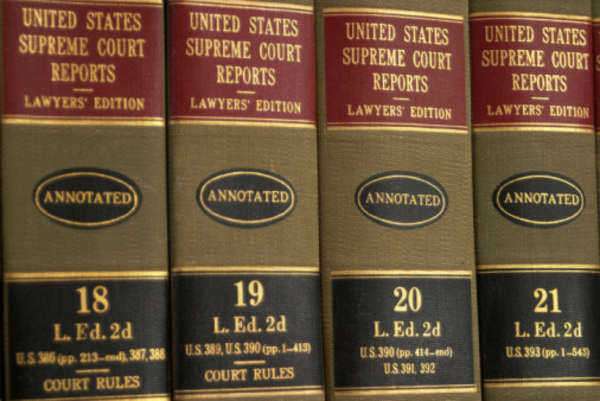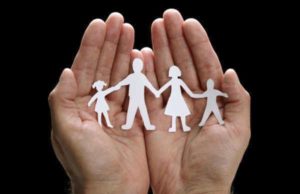
Abortion is a sensitive topic that has been shrouded in controversy for many years. Some argue that women have a right to control their bodies and make decisions about their reproductive health, while others believe that fetuses have the same rights as living human beings. In the United States, abortion laws have been the subject of much debate, with different states passing laws that either restrict or expand access to abortion. This article explores the history of abortion laws in the US, the current state of abortion laws, and the implications of these laws on women’s health and rights.
History of Abortion Laws in the United States
The history of abortion laws in the US dates back to the colonial era when abortions were legal until the point of quickening. The quickening was the time when the fetus started moving in the womb, which was believed to be at around 16-20 weeks. However, in the mid-19th century, abortion was criminalized across the country, with many states passing laws that prohibited all abortions, except when necessary to save the life of the mother.
In the early 20th century, the American Medical Association began to advocate for legalized abortion, arguing that it was safer than the dangerous and illegal procedures that were being carried out in back alleys. In 1973, the landmark Supreme Court case Roe v. Wade legalized abortion nationwide, stating that a woman has a right to terminate a pregnancy until the point of viability, which is around 24 weeks. The decision, however, does not allow for unrestricted access to abortion throughout the pregnancy.
Current State of Abortion Laws in the United States
Today, abortion laws in the US vary widely from state to state. While Roe v. Wade legalized abortion nationwide, the decision also allows states to regulate abortion in the second and third trimesters. Since the Supreme Court’s decision, many states have passed laws that restrict abortion access, with some states going as far as attempting to ban abortion outright. As of 2021, twenty-one states have laws on the books that could be used to restrict abortion or potentially overturn Roe v. Wade if the Supreme Court were to revisit the issue.
State Abortion Restrictions and Bans
As mentioned above, there are states that have passed laws that restrict access to abortions. Some of these laws include:
– Waiting periods: Some states require women to wait a certain amount of time, usually 24 hours, between their initial consultation with an abortion provider and the actual procedure. This waiting period can make it more difficult for women who cannot take time off work or afford to travel twice to the clinic.
– Forced ultrasound: In some states, women seeking an abortion must undergo an ultrasound, and the provider is required to show the woman the image and provide information about the fetus. This can be traumatizing for women who have already made the decision to terminate the pregnancy.
– Gestational age limits: Some states have passed laws that restrict abortion after a certain gestational age. For example, Arkansas prohibits abortions after 18 weeks, while Mississippi bans abortions after 15 weeks.
– Bans on certain procedures: Some states have banned specific abortion procedures, such as Dilation and Evacuation (D&E), which is the most common method used in second-trimester abortions.
– Trigger laws: Several states have laws on the books that would ban abortion should Roe v. Wade be overturned. For example, Alabama’s law criminalizes doctors who perform abortions, with no exceptions for rape, incest, or the health of the mother.
Impact on Women’s Health and Rights
Abortion restrictions can have far-reaching consequences for women’s reproductive health and rights. When access to safe and legal abortion is limited, many women resort to unsafe and illegal abortions. According to the World Health Organization, unsafe abortions cause 13% of maternal deaths worldwide, and complications from unsafe abortions can result in long-term health problems, disability, and even death.
Restrictions on abortion can also disproportionately affect low-income women and women of color, who may have more difficulty accessing abortion services due to financial barriers or lack of providers in their area. According to a 2020 report by the Guttmacher Institute, nearly two-thirds of women who have abortions are low-income, and Black and Hispanic women are more likely to have unintended pregnancies and seek abortions than white women.
Furthermore, restrictions on abortion can infringe on women’s constitutional rights. The Supreme Court has affirmed that a woman has a right to make decisions about her body and reproductive health, and that the government cannot unduly burden that right. Laws that restrict access to abortion can be seen as an undue burden, particularly for women who live in states with few abortion providers or who cannot afford to take time off work to travel long distances to access abortion care.
Conclusion
Abortion laws in the United States have a complex history, with different states passing laws that either restrict or expand access to abortion. While Roe v. Wade legalized abortion nationwide, it also allowed states to regulate abortion in the second and third trimesters. Since the Supreme Court’s decision, many states have passed laws that restrict access to safe and legal abortion. These restrictions can have far-reaching consequences for women’s health and rights, particularly for low-income women and women of color. It is important for individuals to stay informed about the ongoing changes in these laws and how they can impact women’s lives.
Introduction
Abortion in the United States was made legal by action of the Supreme Court, although there are some distinctions that vary from jurisdiction to jurisdiction. The most common distinction is “life after viability” where states have tried to legislate the latest point in a pregnancy that a woman may receive an abortion, if there is a chance that the fetus will be born healthy.
The ability of the states to set some laws on abortion availability, such mandatory waiting periods and counseling has created a unique set of circumstances for every state in the US.
What are alternatives to abortion?
Abortion providers and other organizations offer alternatives to abortion such as adoption assistance for mothers that cannot take care of the child and counseling to develop a support network for the mother, in hopes that she may reconsider and keep the child. Some states may make counseling either over the phone or in-person mandatory.
What are legal definitions in abortion laws?
These definitions may be subject to interpretation:
Viability – this is the state at where a fetus can live outside of its mother, with or without artificial life support. The initial Row v Wade ruling placed viability at 24 – 28 weeks or at the end of the “second trimester.” Most scientists agree that the range of viability is between 21 and 27 weeks with no fetus guaranteed survival outside the womb. Some states may create a “presumption” of viability at a mark that they set.
Late term abortions – this generally refers to abortions that happen after the fetus is viable. This was made illegal by an act of Congress and later affirmed by the Supreme Court in 2007.
Trimester – this is the division of the gestational period into three parts with the first trimester between 0 – 12 weeks, second between 13 – 28 weeks and third 29 – 40 weeks. The vast majority of abortions take place in the first trimester.
Federal issues over abortion
Abortion has been controversial since the Supreme Court ruling in Roe v. Wade that legalized abortion in all 50 states. Prior to that, very few states had legalized it with no restrictions and a significant number did not allow abortion under any circumstances.
Roe vs. Wade established a mother’s right to terminate her pregnancy up until the point of “viability”
The Unborn Victims of Violence Act, signed into law by President George Bush in 2004, characterizes the murder of a pregnant woman as the murder of two persons, with specific protections for mothers and abortion providers. Still abortion opponents claim this as federal recognition of a fetus as a “person” and abortion proponents claiming that the law is in conflict with the Roe v Wade ruling and a possible first step to illegalizing abortion.
The Partial-Birth Abortion Ban Act of 2003 bans late-term abortions and criminalizes the procedure for both the mother and the doctor. This act became law in 2007 after the US Supreme Court rules that it did not violate the provisions and rights set in the Roe v Wade Decision.
The rights of states to set limits on abortion was challenged in the 1992 case Planned Parenthood v Casey with the Supreme Court accepting all but one restriction (spousal notification) for women seeking abortions.
State issues over abortion
As states may set some restrictions of abortions, laws vary from state to state. These are some common distinctions and issues on a state level.
Informed consent – A state may be able to mandate that a women by provided with information about the health risks of abortion before receiving one. This is to dissuade women that do not understand the perceived magnitude of their decision.
Spousal notification – this provision required women to have the permission of their husbands before getting an abortion. The Supreme Court struck this provision down during a legal challenge of Pennsylvania’s abortion law.
Parental consent – minors seeking an abortion may be mandated to have parental consent to have an abortion. Less stringent rules may require that the minor only inform one or both parents (depending on the state) beforehand. Only six states specifically do not require parental notification and consent.
Waiting period – some states may require a woman to wait a set amount of time before receiving an abortion. This creates an opening for counseling and for the woman to reconsider her decision.
Abortion counseling – a few states (Louisiana, Mississippi, Indiana, Utah and Wisconsin) require an abortion seeker to have an in-person counseling session. Other states require counseling but allow it to be done over the phone.
In the event that the Row v Wade decision is ever overturned, some states have “trigger laws” that would either ban or preserve abortion rights in that state as a result.
A potential constitutional challenge to Roe v. Wade, South Dakota’s Women’s Health and Human Life Protection Act was repealed by voters in November 2006. Nonetheless, a constitutional challenge to the Supreme Court’s ruling is likely whenever the Supreme Court is perceived to have shifted to a conservative point of view.
Timeline of Abortion Cases and Acts
1971 – Roe v. Wade legalizes abortion in the United States
1971 – Doe v Balton strikes down Georgia law requiring three doctors to approve an abortion.
1976 – The Hyde amendment bans the use of federal funds, such as Medicaid for abortion procedures.
1981 – Bellotti vs. Baird affirms the right of minors to have an abortion without parental consent
1989 – Washington state law declaring life beings at conception found unconstitutional
1992 – Supreme Court reaffirms that states may not bad abortion but may place some restrictions such as waiting periods and consent.
2003 – Partial-Birth Abortion Ban Act passes Congress
2006 – South Dakota Human Life Protection Act was repealed by voters ending potential constitutional challenge.
2007 – Partial Birth Abortion Act affirmed by Supreme Court

























